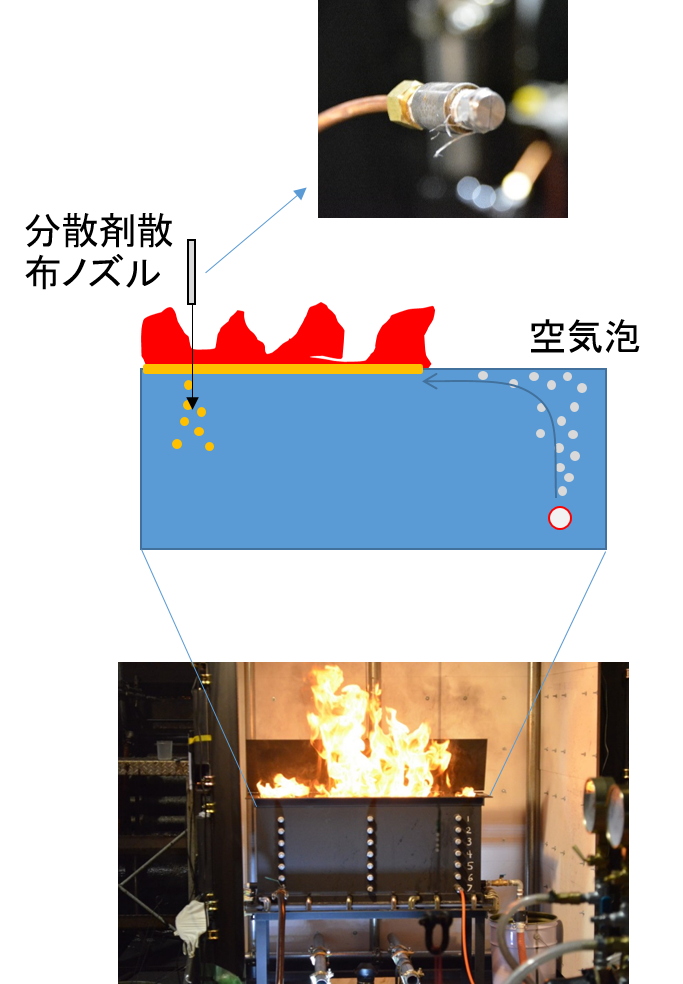東日本大震災では多数の津波火災が発生している. こうした水面燃焼油への対応では, 火災の拡大防止技術と消火技術の両方が基本技術として求められる. このうち消化技術については、 陸上施設における通常の油火災に多用される泡消火剤による窒息消火は、 海上においては風の影響を受け易く,効果が限定されるなど, 有効な対応手法が存在しない状況にある. 港湾空港技術研究所では、こうした点を克服することを目的として、 水面燃焼油を下面に存在する多量の水に分散させることで消火する分散消火法について検討した. 実験では、界面活性剤水溶液あるいは希釈した油処理剤を用いることで、効率的に消火できることがわかった。
The Great East Japan Earthquake resulted in numerous tsunami-induced fires. Addressing fires on burning oil at the water's surface requires both techniques for preventing fire expansion and firefighting techniques. Among these, fire suppression methods involve the use of foam fire extinguishants commonly used for oil fires on land-based facilities. However, at sea, these methods are more susceptible to the effects of wind and are limited in effectiveness, creating a situation where viable response methods are lacking. To overcome these challenges, Port and Airport Research Institute explored a dispersed firefighting approach aimed at extinguishing fires by dispersing burning oil on the water's surface into a substantial volume of water beneath. In experiments, it was found that the use of surfactant solutions or diluted oil treatment agents allowed for efficient firefighting.






